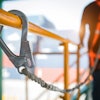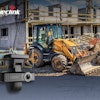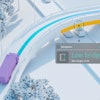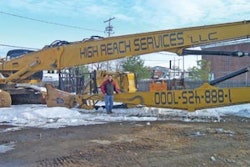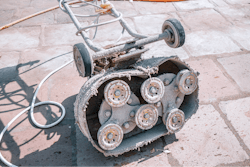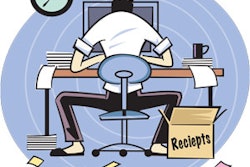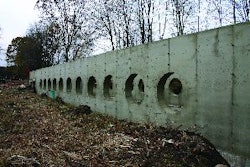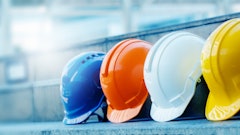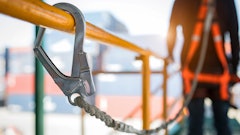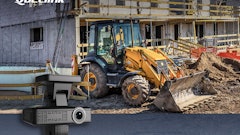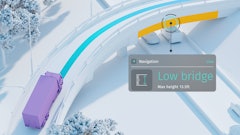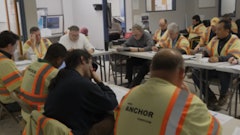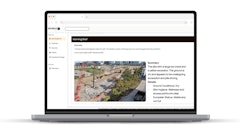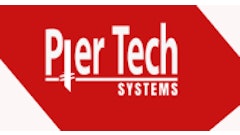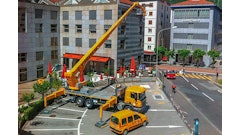I just returned from CONEXPO-CON/AGG and am dead tired. My shoes need replacing and I am not sure my feet don't need replacing too. That was one heck of a show.
From what I could see, and from talking to various manufacturers, it looks like people were placing orders to take advantage of the meager interest rates and the soft market conditions.
I also polled various Midwest contractors over the last few months and most said they had work for 2008. When talking to those same people in Vegas, they still had work, but some of the bigger projects related to retail outlets were getting pushed back 12 to 18 months. Just goes to show you how fast things change.
One thing that surprised me, however, was the response I received from dealers when I asked how much contractors were asking about the tax benefits included in the new economic stimulus package, and how they might take advantage of the program. Almost everyone I spoke with said contractors were not really aware or understood the program.
Consequently, we are going to go through the package, take a look at a few numbers and refer you to a web site that can calculate the perceived benefit for you. Keep in mind, however, I am not providing tax advice. You have to get that from the professional you pay to provide that service.
There are two parts of the stimulus package that relate to the purchase or ownership of construction equipment: Section 179 - Expensing of Certain Depreciable Assets, and the Special Bonus Depreciation Rules. We are going to cover both topics, and lead you in the right direction to determine if a benefit is provided for you or your company by these changes in the tax code.
Section 179
Section 179 allows a taxpayer to deduct or expense the cost of qualifying property placed in service during a taxable year. If you qualify, you may get to write off 100% of the investment. To qualify, the equipment has to be defined as depreciable tangible personal property (no real estate).
The new law allows a taxpayer to expense up to $250,000 of qualifying assets placed in service in 2008, as long as the taxpayer does not purchase qualified personal property in excess of $800,000 during that same tax year. If purchases exceed $800,000, the Section 179 benefit is reduced on a $1 for $1 basis for all amounts over $800,000. In short, once you hit $1,050,000 in 2008 property purchases, you get zero Section 179 benefits.
IMPORTANT POINT #1: Section 179 applies to the 2008 business year. If you operate on a calendar year, this means January 1 to December 31, 2008. If you work on a fiscal year, the benefit is available at the start of your 2008 year, whenever that may be.
IMPORTANT POINT #2: Section 179 applies to both new and used equipment purchases.
IMPORTANT POINT #3: Section 179 deductions cannot be used to create or increase an operating loss. You can carry them over to another year, but you are still restricted from generating or increasing a tax loss.
Bonus Depreciation
The Bonus Depreciation Rules allow a taxpayer to depreciate 50% of qualified tangible personal property, as long as the purchase was consummated and the item placed in service in 2008. Contracts completed in 2007 and delivered in 2008 do not qualify.
In addition, taxpayers are allowed to apply normal MACRS depreciation to the 50% of tax basis remaining. For the first year, MACRS allows a 20% deduction. In this case, you would get the 50%, then 20% of the remaining 50% - or another 10% of the original cost - for a total of 60% of the original cost as a deduction in 2008.
So if you purchase qualified equipment worth $500,000, you would get the following benefit:
Taxpayers can also generate a tax loss from the depreciation deductions to carry back to recover taxes paid in prior years.
IMPORTANT POINT #4: The Bonus Depreciation applies only to new equipment.
IMPORTANT POINT #5: On rent-to-sell transactions, only the original lessee can use the Bonus, and only if they convert the rental to a purchase within the first three months of the transaction.
IMPORTANT POINT #6: The Bonus Depreciation is allowed for both regular and alternative minimum tax (AMT). There is no AMT penalty for taking the Bonus.
Now I assume you want the bad news - and there is some. If you write off $400,000 of a machine that cost $500,000 for 2008, you only have $100,000 to write off in future. However, if you follow a "bird in hand" philosophy, you may want to take the bucks while you can. In any event, any time you use this type of benefit, you have to stay on top of your tax planning in the future.
For example, should you sell a piece of equipment out of your fleet that has zero tax basis, the gain is 100% taxable at ordinary rates. If you normally had depreciation deductions to offset these gains, you didn't have to worry about it. But if you use Section 179 and Bonus Depreciation, you may not have the tax deductions you need to cover the gain. You could, of course, use a 1031 tax-free exchange to defer the gain, but that is a story for another day.
To use or not to use...
So, do you use the benefits or not? To make that determination, you need to know the following:
- How much equipment do you plan to buy in 2008?
- How much tax did you pay in the past two years, and at what bracket?
- What is your expected tax profits for 2008?
If you have a need for equipment and can take advantage of the tax benefits, it is worth investigating. If not, you don't have to use these temporary rules. The enticing interest rates alone may be enough to encourage you to make a purchase.
To help you assess the potential benefits for a given purchase, you can use the Stimulus Package Benefit Calculator found at the Associated Equipment Distributor's DepreciationBonus.org web site. Fill in the cost of the equipment being purchased and what you have available for Section 179 and the calculator will do the rest.
For those of you who have the need, the stimulus package provides benefits. For those of you who don't know whether you have the need, it's time to find out!


